VERY RARE! WWII 1944 Battle of Peleliu (Babelthuap) Operation Stalemate II CONFIDENTIAL Combat Intelligence Invasion Map & Intelligence Report (Double-Sided)
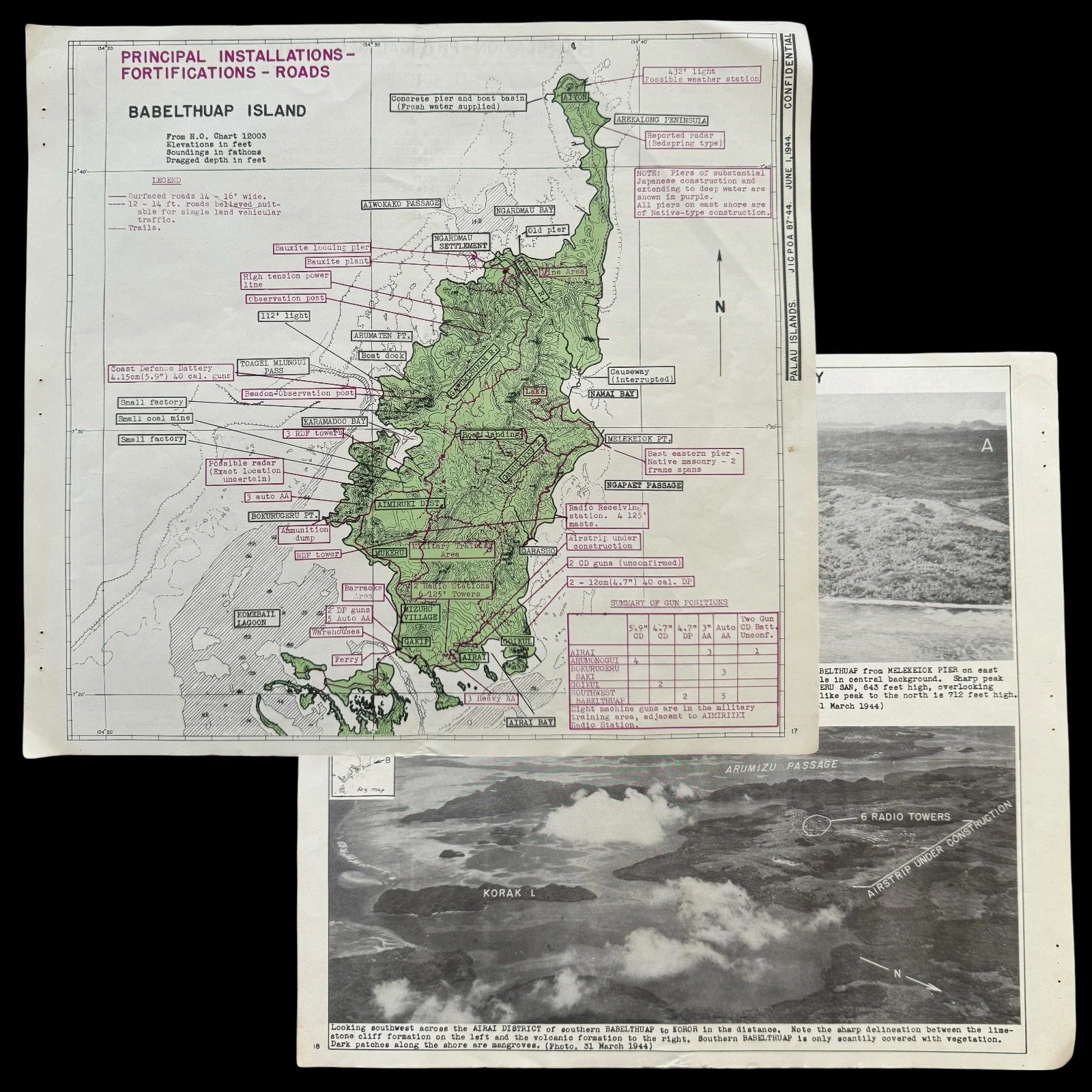

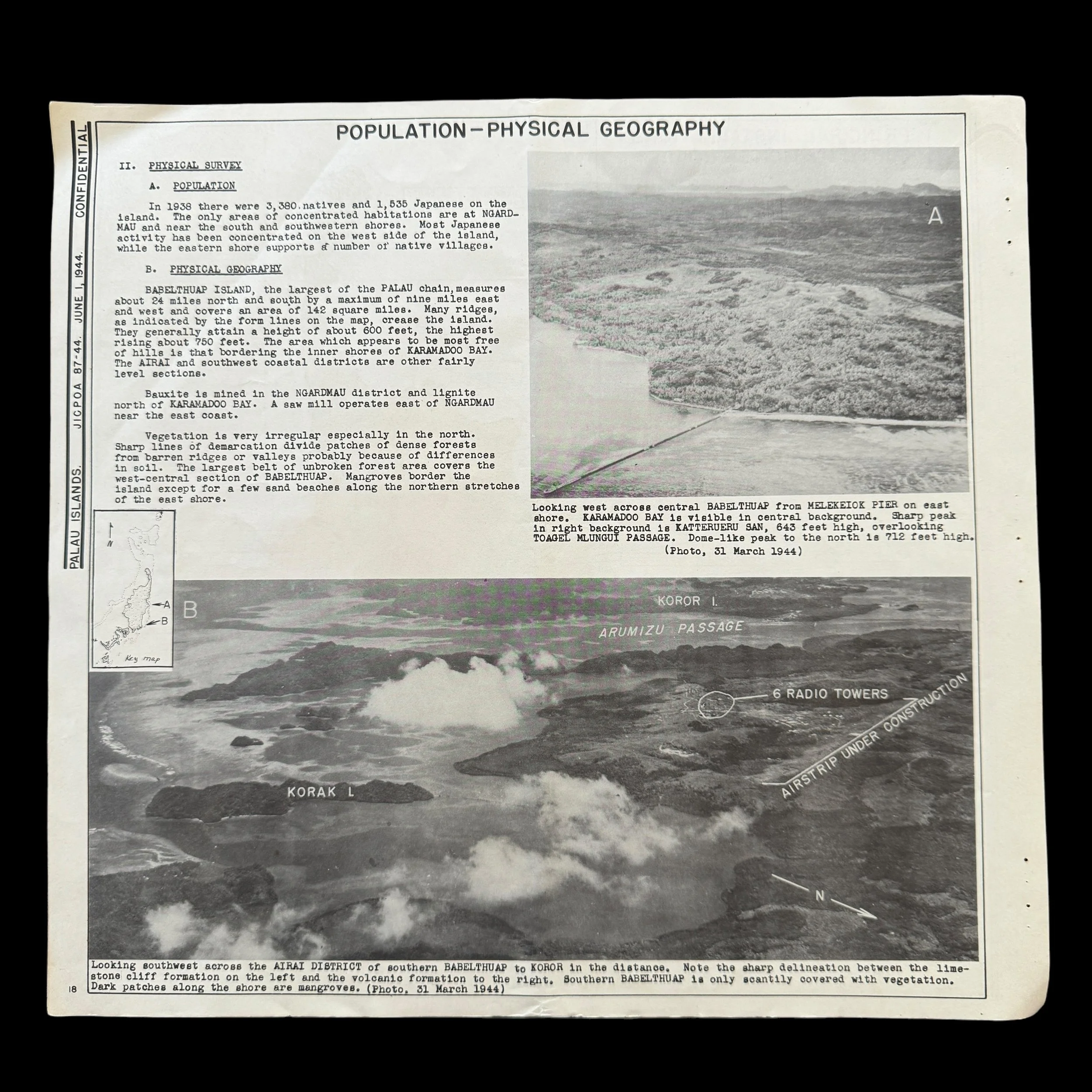






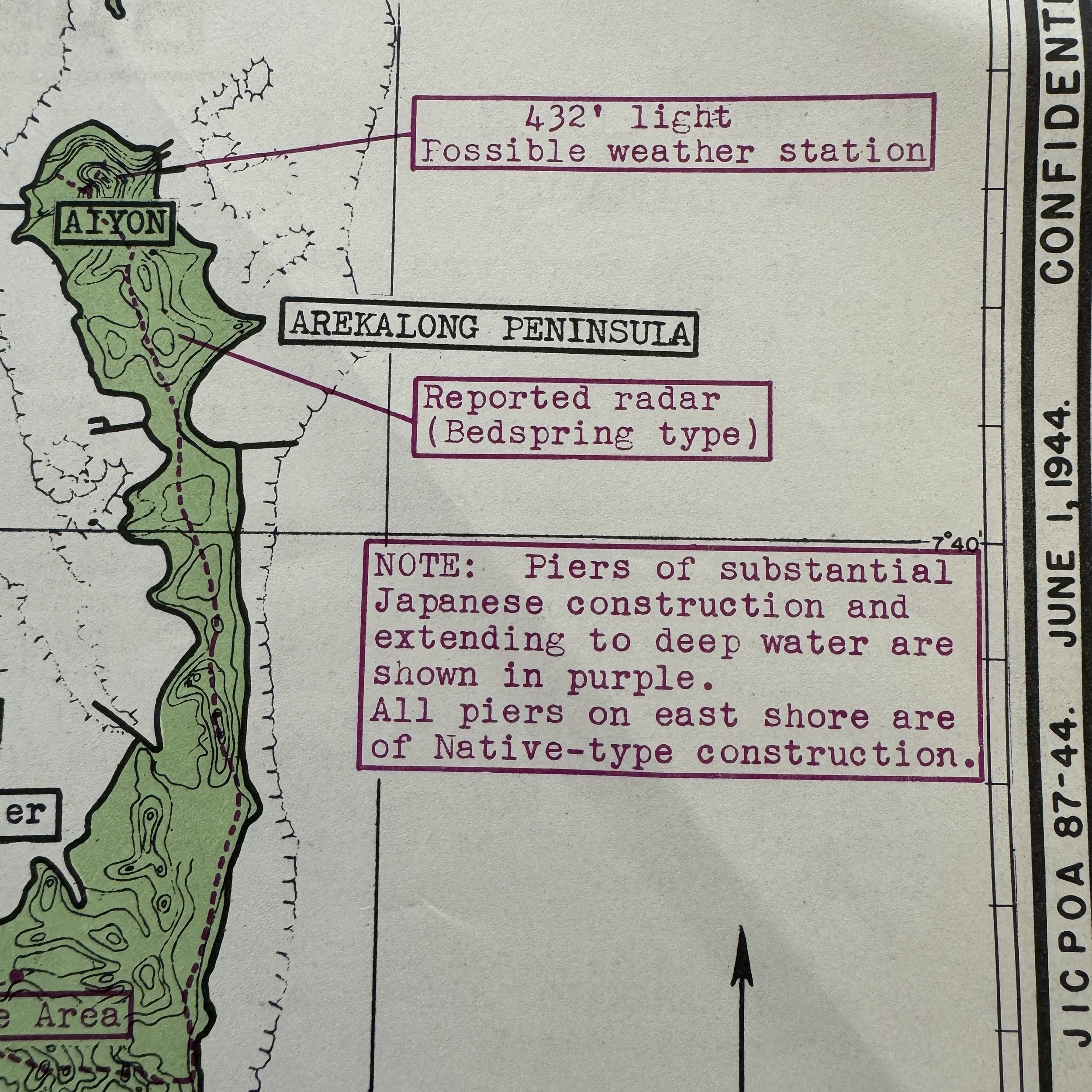
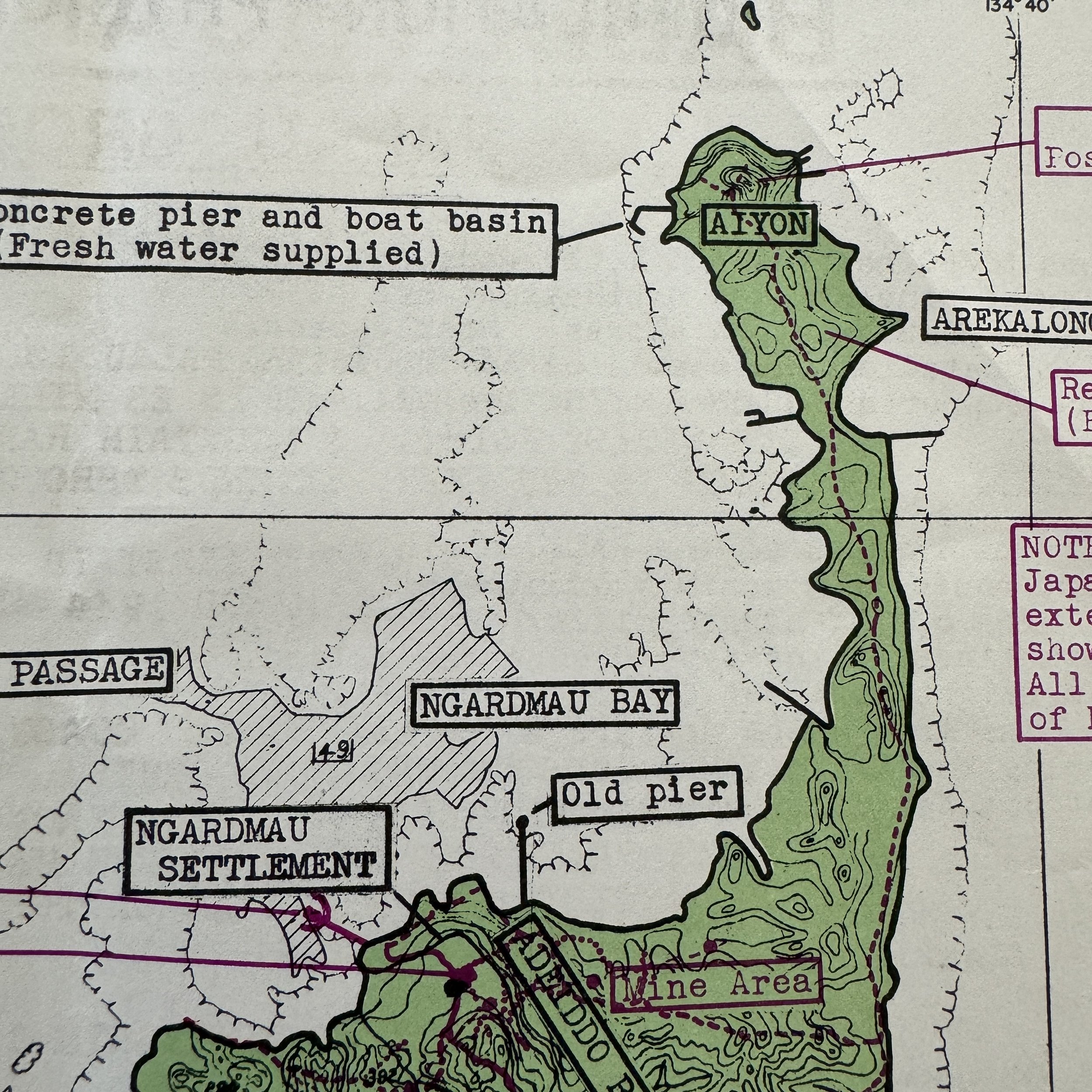











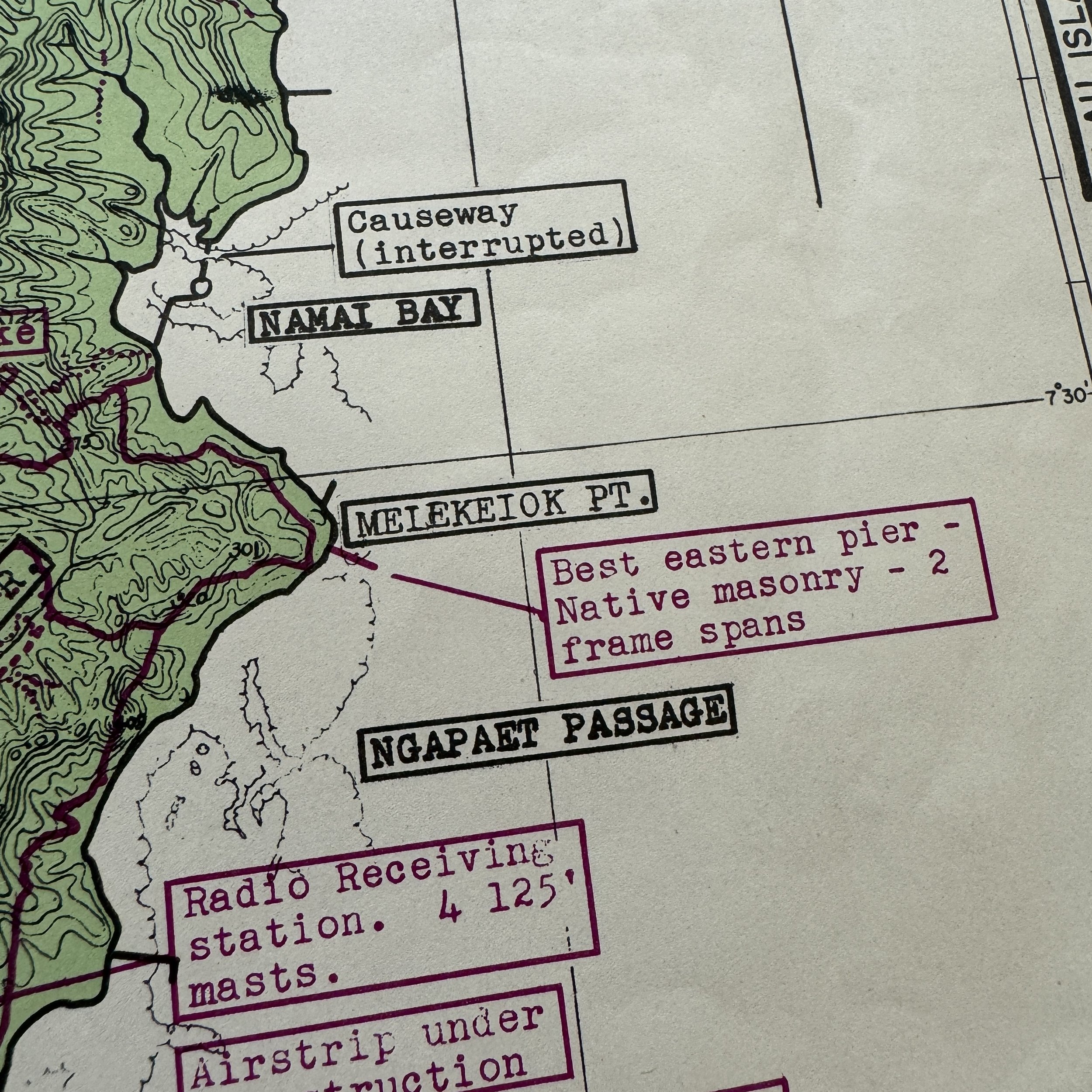


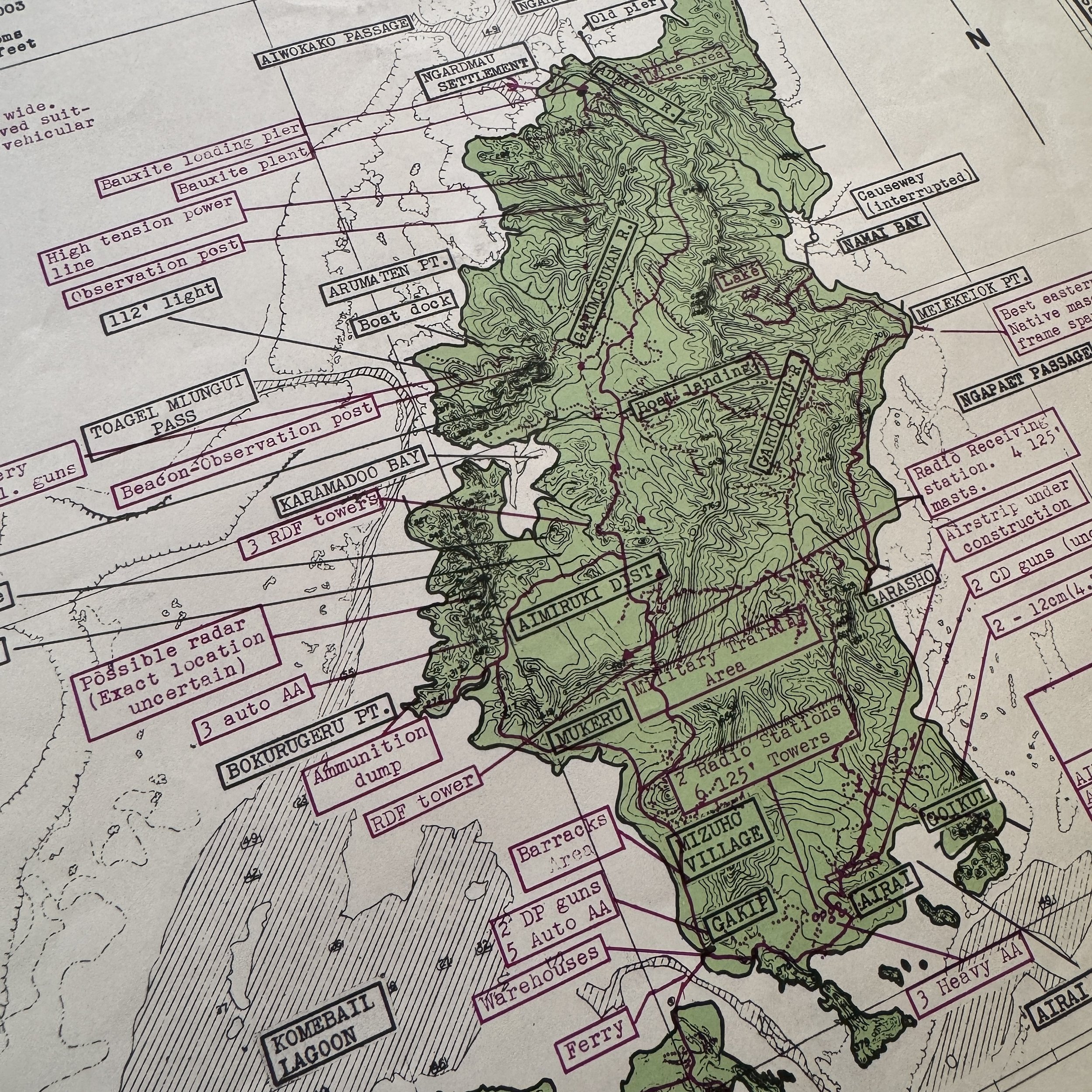

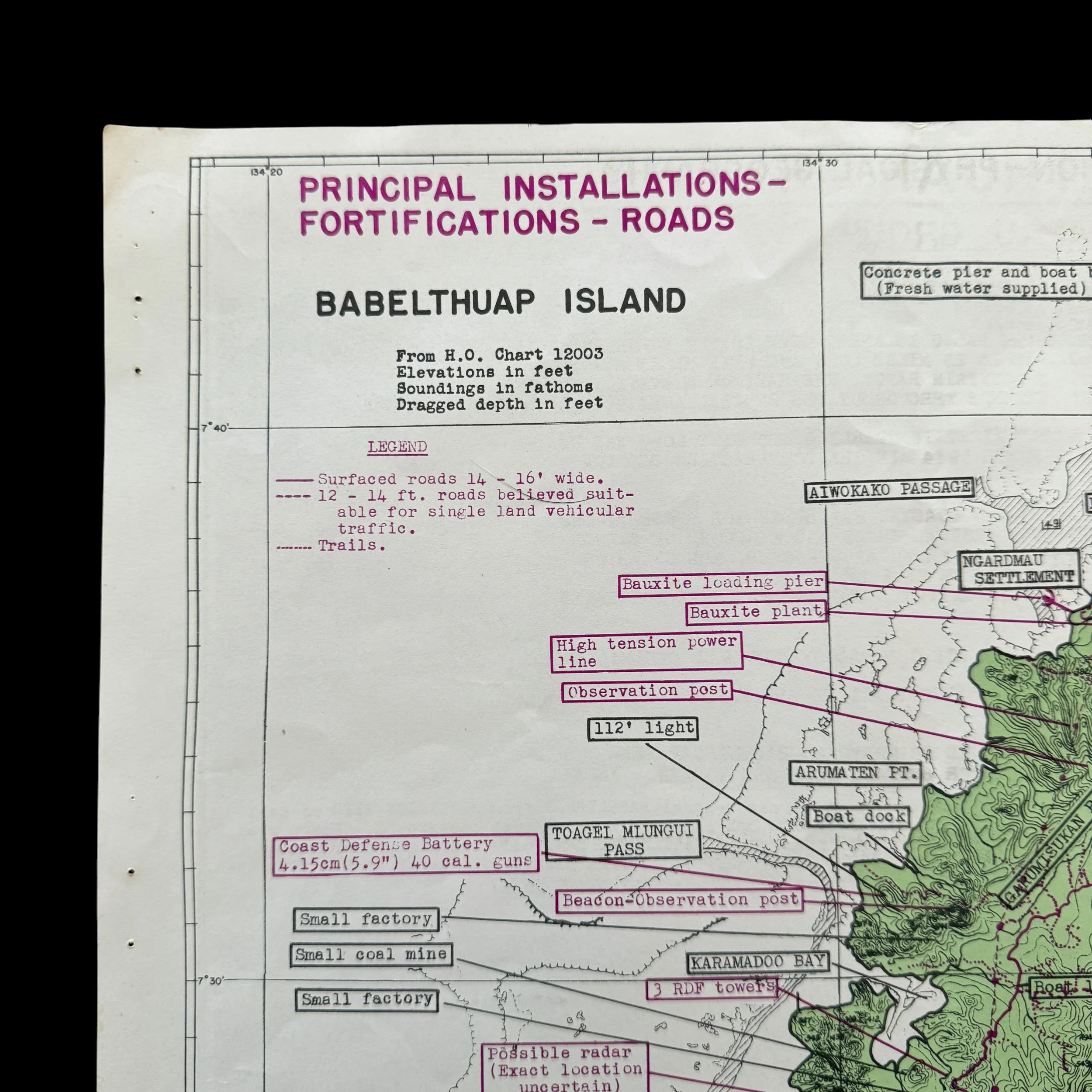

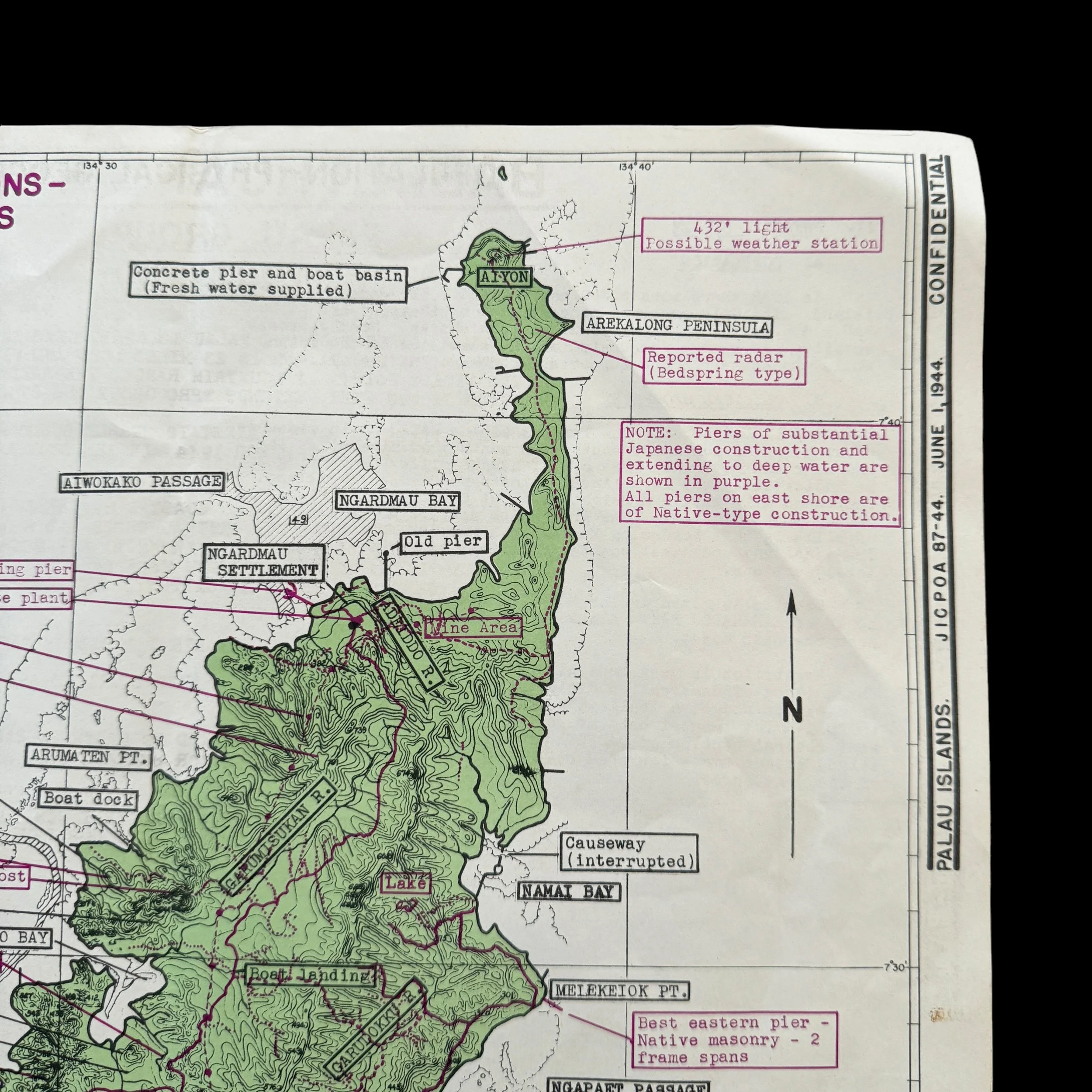
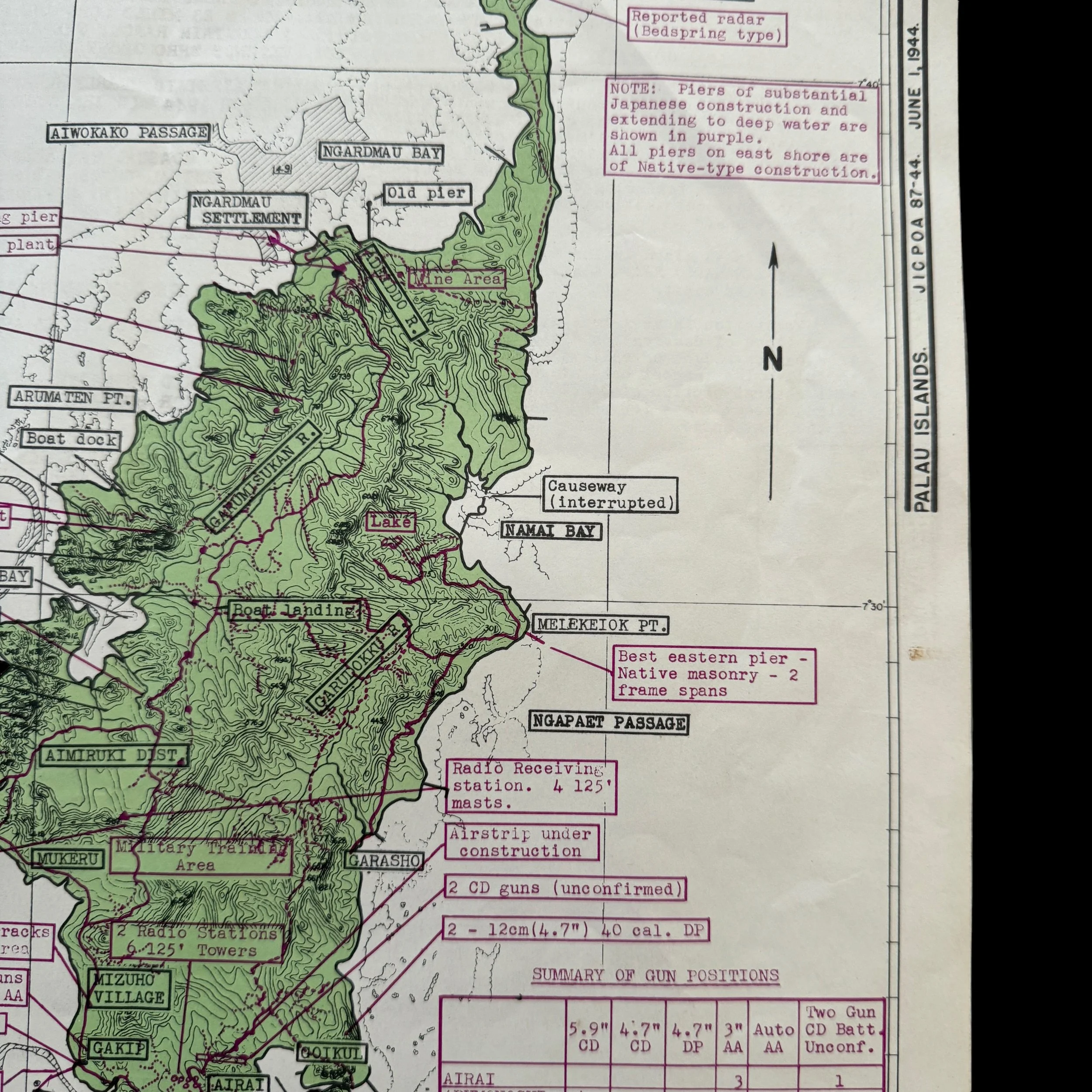
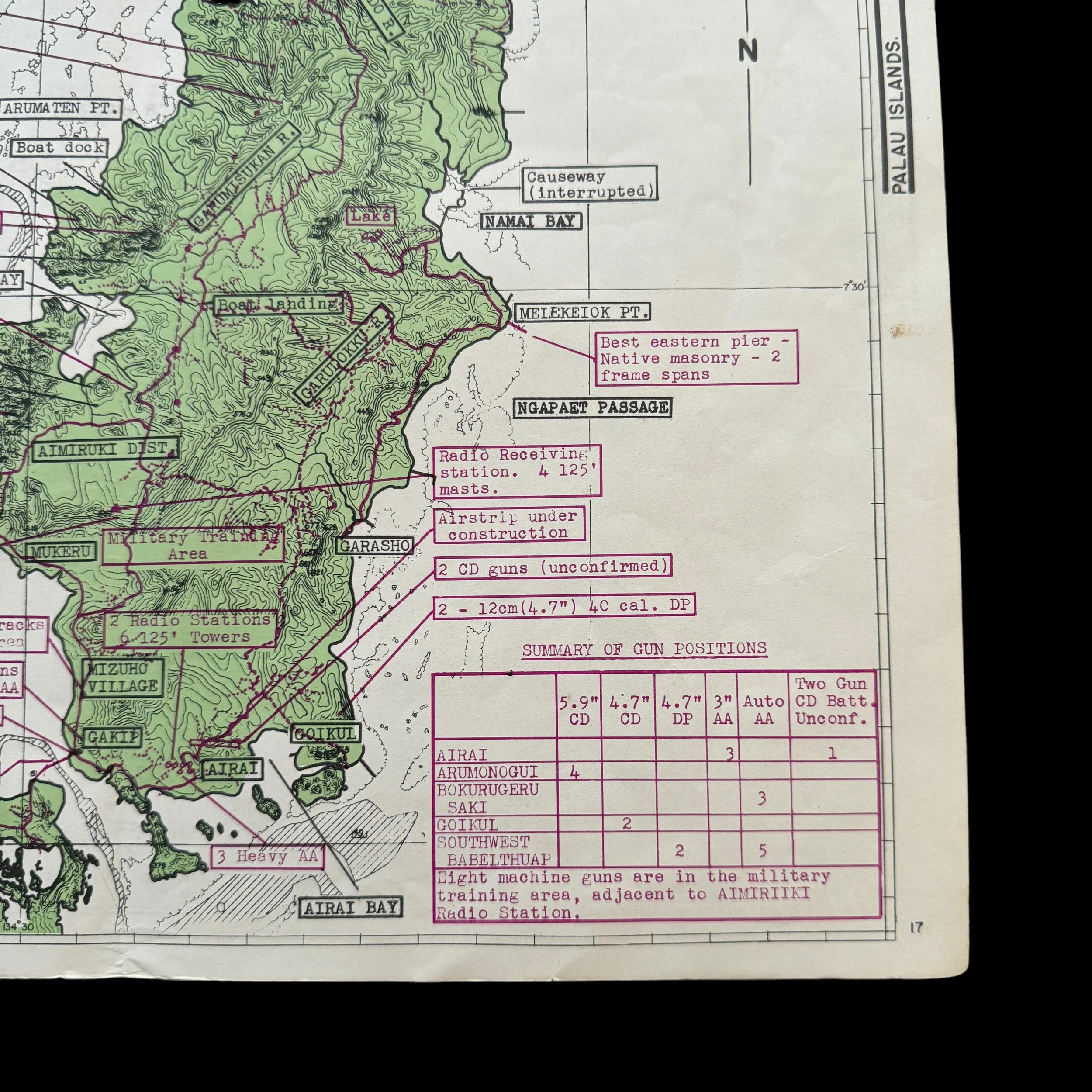
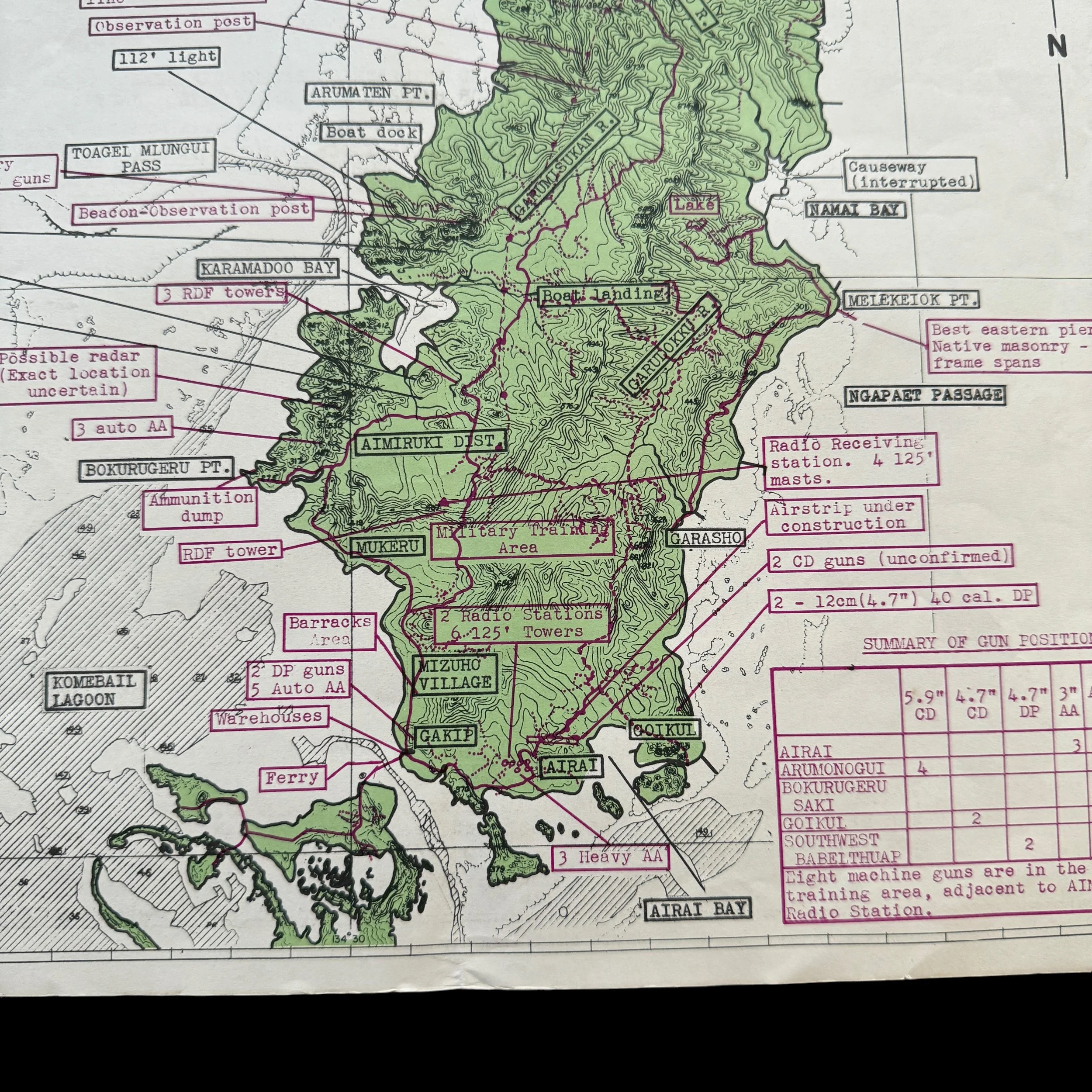
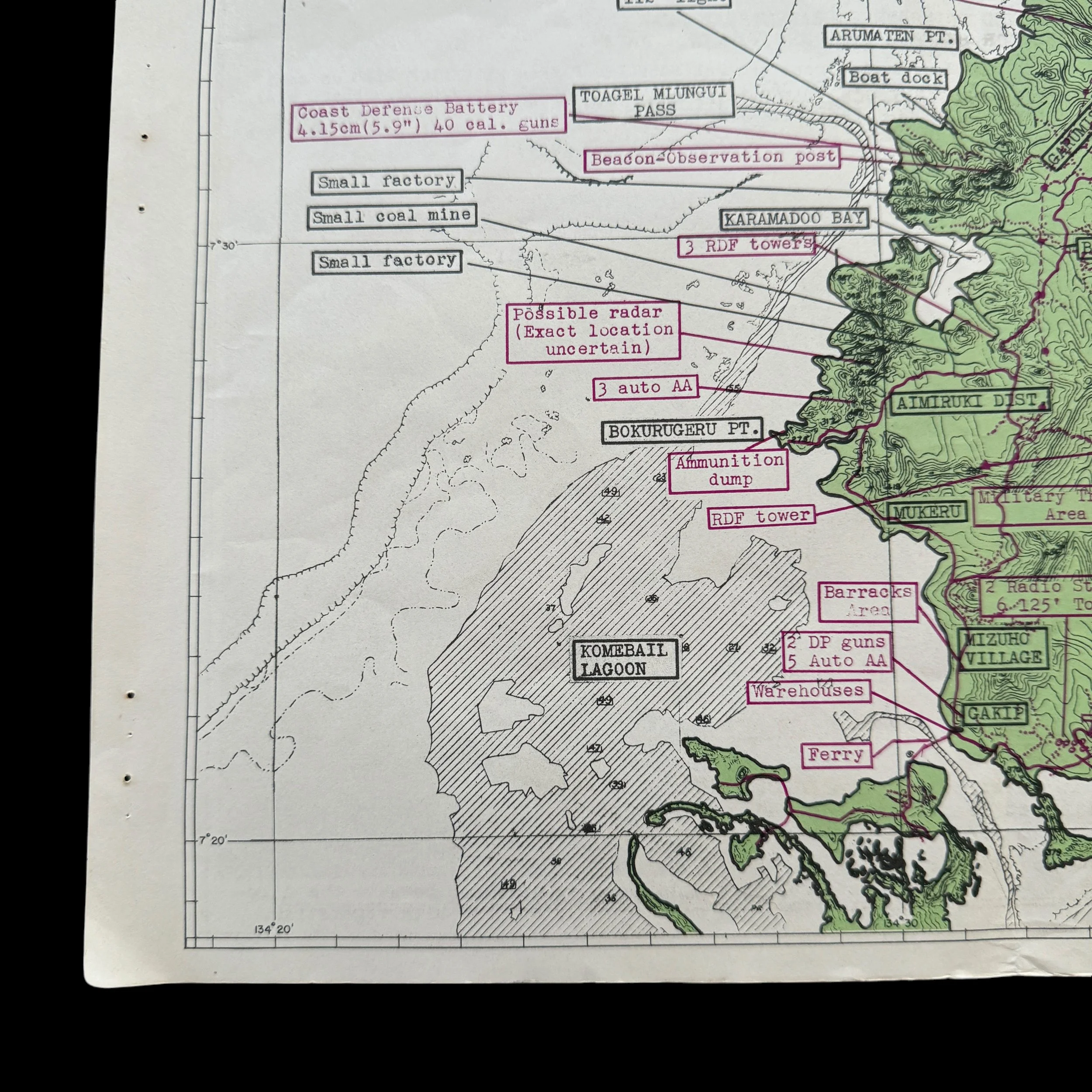
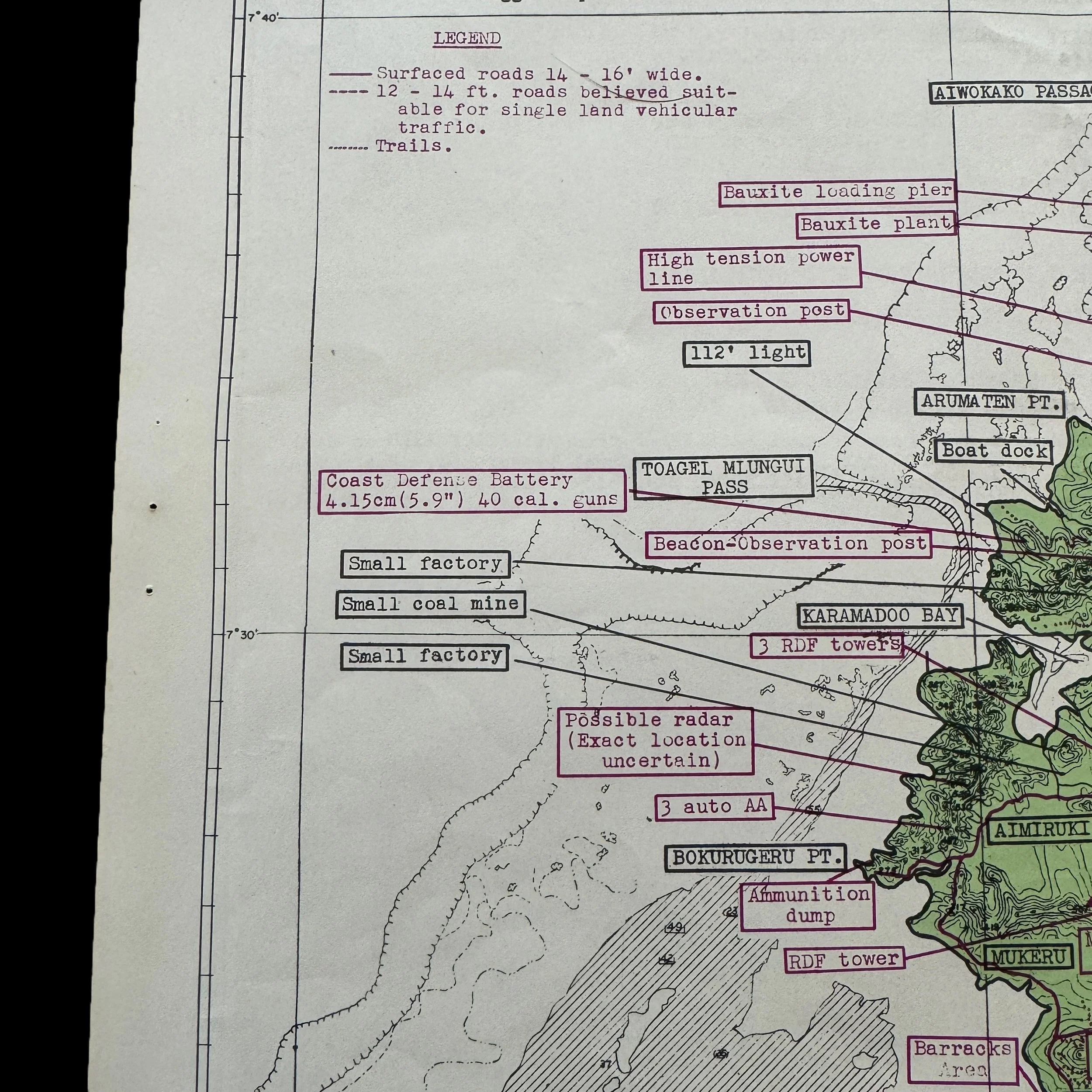
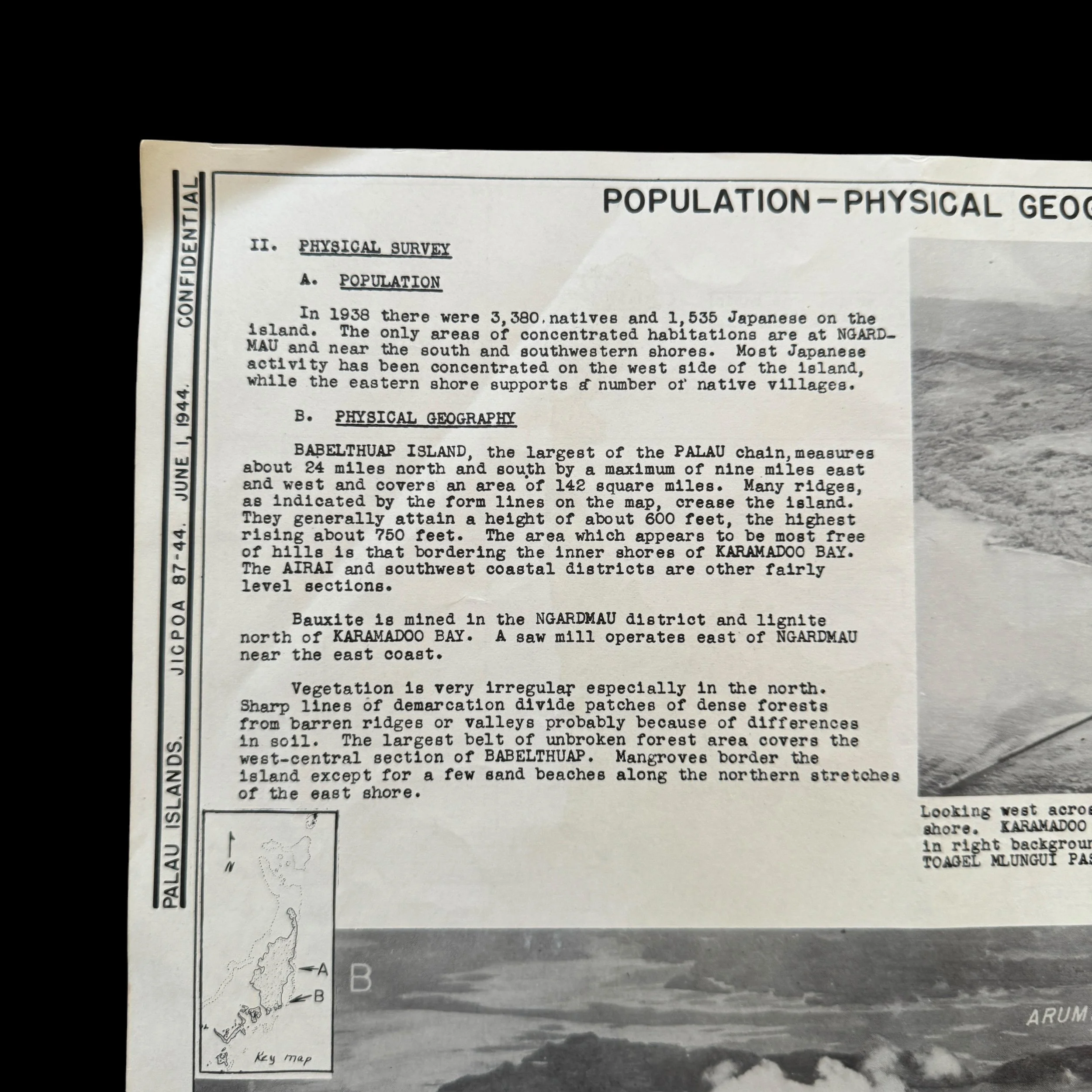
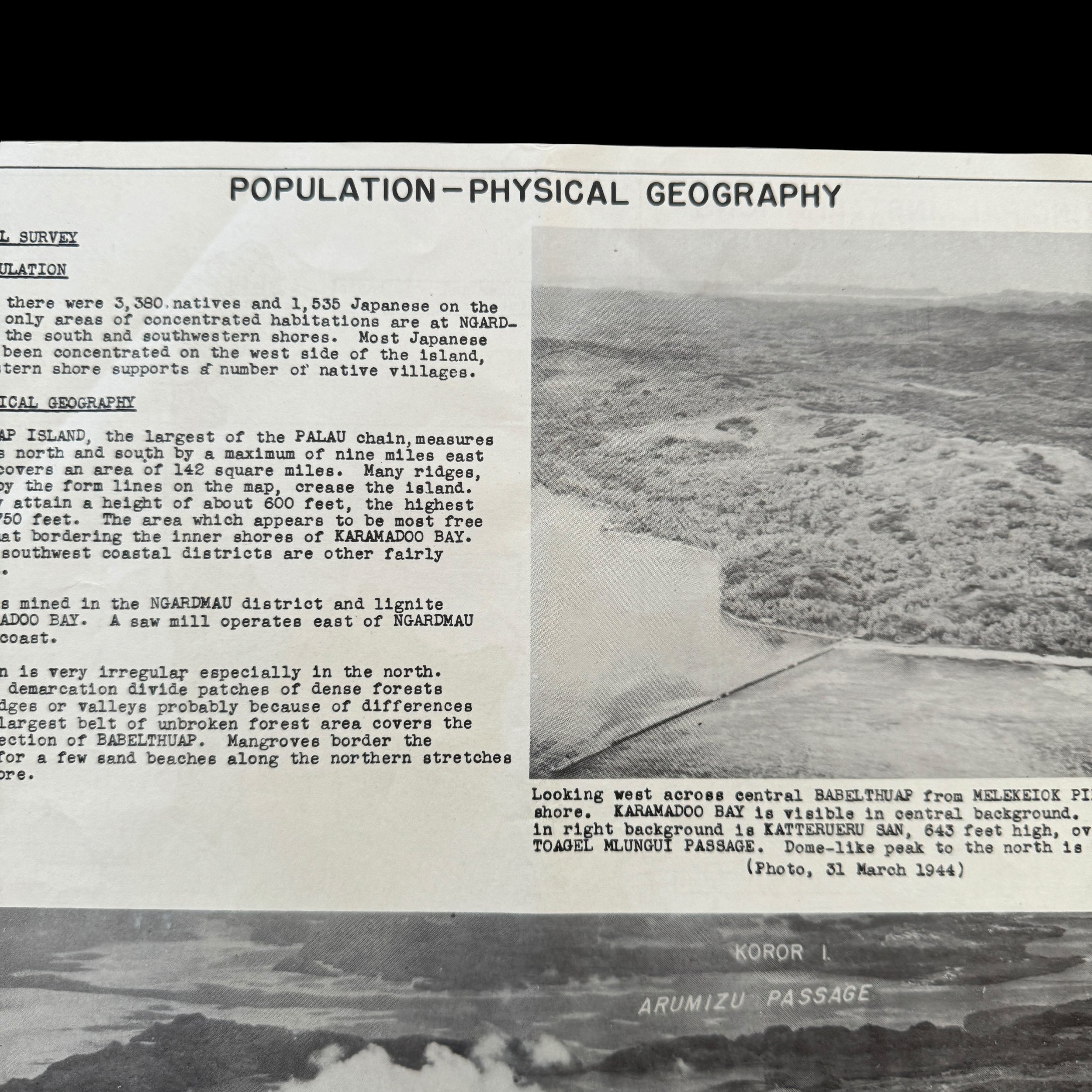

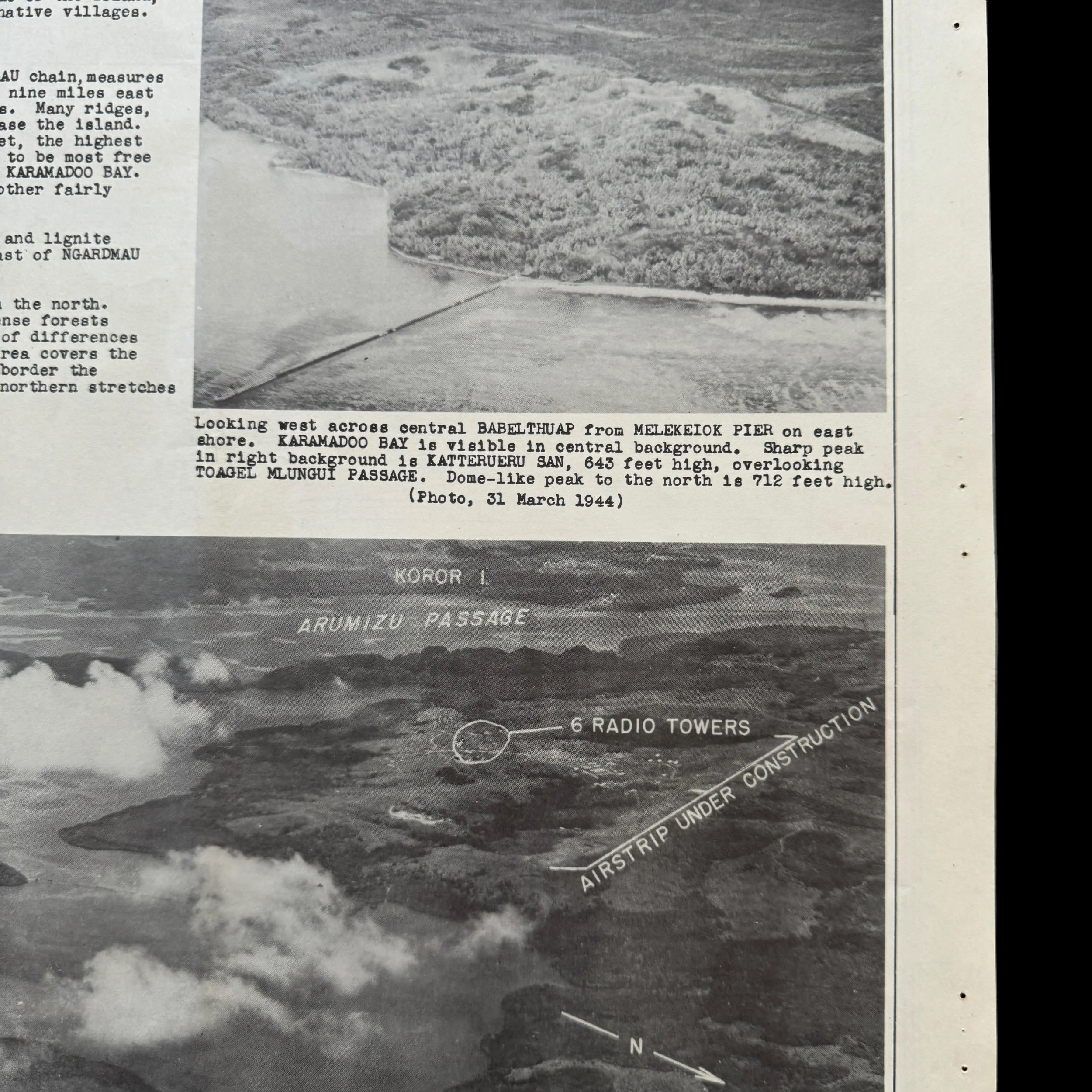
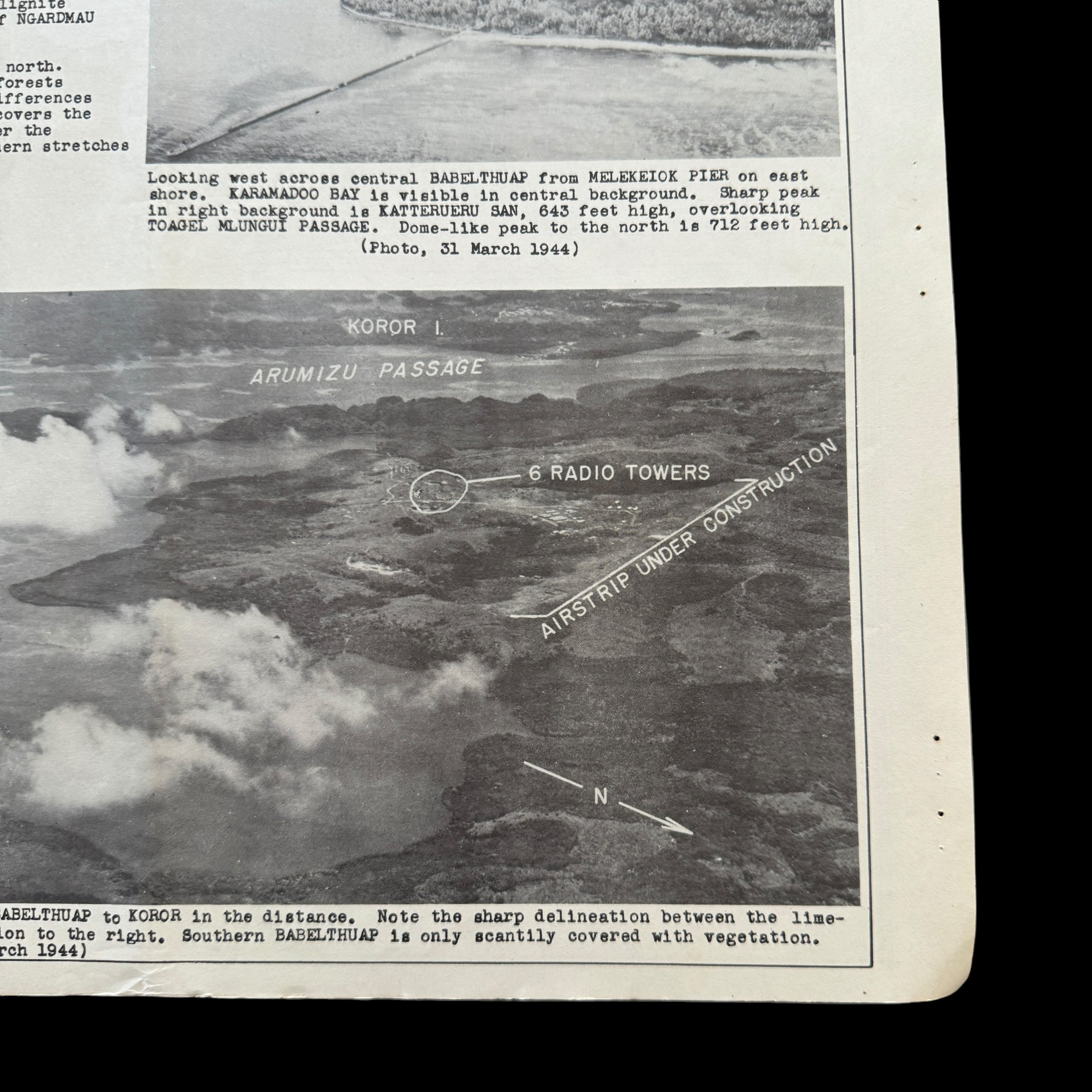

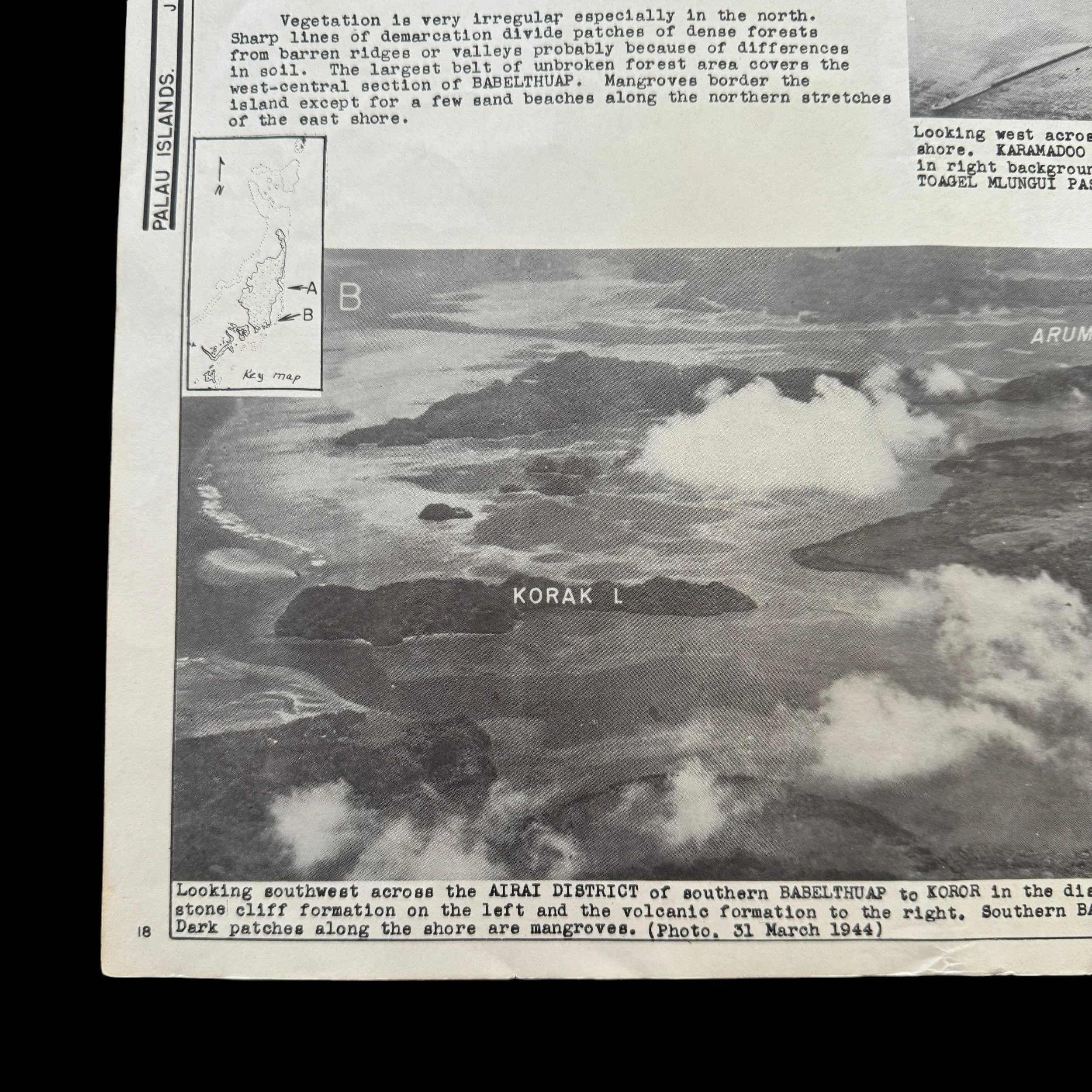

VERY RARE! WWII 1944 Battle of Peleliu (Babelthuap) Operation Stalemate II CONFIDENTIAL Combat Intelligence Invasion Map & Intelligence Report (Double-Sided)
Comes with a hand-signed C.O.A.
Size: 13 x 14 inches
This incredibly rare and museum-grade WWII artifact is an original World War II Battle of Peleliu (Operation Stalemate II) CONFIDENTIAL marked combat intelligence invasion map and invasion military intelligence report (double-sided).
As per military classification guidelines at the time, it states, “It is recommended that "Top Secret" material - Operation Plans and Orders - be reclassified downward to "Secret or Confidential" prior to the start of an operation by a sufficient length of time to permit of adequate and timely distribution to commanders and officers and concerned. Only when in that area of combat theater can maps, reports, and plans be re-classified as “Restricted” to be used in combat and in the field.”
Dated June 1944 (3 months prior to the D-Day invasion of the Palua Islands) this map was a part of the largest amphibious operation in the Pacific to date, with more than 1,600 ships and craft and more than 800 aircraft deployed.
The Joint Intelligence Center Pacific Ocean Areas (JICPOA) played a pivotal role in producing military intelligence during World War II, particularly in the Pacific Theater. Established in 1943 under the command of Admiral Chester Nimitz, JICPOA was tasked with gathering, analyzing, and disseminating intelligence across the vast Pacific Ocean Area, covering millions of square miles of ocean and land. JICPOA’s multi-branch organization combined resources from the U.S. Army, Navy, Marine Corps, and other intelligence units, making it a hub for coordinated intelligence operations during the war.
One of JICPOA’s most significant contributions during WWII was in the preparation for amphibious assaults, such as the Battle of Peleliu in the Palau Islands, part of the larger Operation Stalemate II in 1944. JICPOA was responsible for producing detailed intelligence maps that were critical for the U.S. military's planning and execution of the invasion. These maps were created from aerial reconnaissance, submarine patrols, and photo interpretation, and they provided precise topographical details, enemy troop positions, and the layout of defensive installations, including the extensive cave networks that Japanese forces used for fortification.
For the Battle of Peleliu, JICPOA’s intelligence maps informed U.S. commanders about the island’s challenging terrain, fortifications, radio systems and more giving the U.S. forces a clearer understanding of what to expect. However, despite these detailed maps and military intelligence, the battle proved more difficult than anticipated due to the Japanese strategy of using fortified positions rather than a direct beach defense, leading to a protracted and costly engagement.
JICPOA’s ability to produce accurate intelligence maps underlined the importance of coordinated intelligence in modern warfare. The maps not only provided essential strategic insights but also saved lives by enabling U.S. forces to better prepare for the enemy’s defenses. In the Battle of Peleliu and other Pacific campaigns, JICPOA’s intelligence gathering and map production were critical in shaping the success of U.S. operations, contributing to the eventual Allied victory in the Pacific.
The Invasion of the Palau Islands and the Battle of Babelthuap Island
The Pacific Theater of World War II was characterized by intense island-hopping campaigns as Allied forces sought to break Japanese control over the region. Among the key areas targeted by the Allies was the Palau Islands, strategically located in the Western Pacific. The Palaus are part of the Caroline Islands and served as a critical defensive outpost for the Japanese Empire, providing a base for naval operations and an obstacle to Allied movement towards the Philippines and Japan. The invasion of the Palau Islands, particularly the battles for Peleliu and Babelthuap (often spelled Babeldaob), was a significant part of this campaign. While Peleliu received the bulk of attention due to its brutal combat and high casualty rates, Babelthuap—the largest island in the archipelago—also held strategic importance and represented a different, less conventional theater of combat.
Strategic Importance of the Palau Islands
By 1944, the United States and its Allies had made significant strides in the Pacific, including securing Guadalcanal, Tarawa, and the Marshall Islands. The next phase in General Douglas MacArthur’s "island-hopping" strategy was to push towards the Philippines. To achieve this, they needed to neutralize Japanese positions in the Palau Islands, particularly those on Peleliu and Babelthuap, which were heavily fortified and could serve as bases for future Japanese offensives or defensive operations.
The Palau Islands formed part of Japan's "absolute defense zone," which the Empire hoped to use as a buffer to delay or halt the Allied advance toward Japan. Babelthuap, as the largest island in Palau, served as the administrative and logistical center of the Japanese forces in the region. The island had vital airfields and was expected to be heavily defended.
The Battle for Peleliu: Prelude to Babelthuap
The first phase of the Palau campaign began with the invasion of Peleliu in September 1944. The Battle of Peleliu, lasting from September 15 to November 27, was one of the most brutal and costly battles in the Pacific Theater. The island, home to Japanese fortifications and a critical airfield, was the initial focus of the Allied invasion. It involved intense combat between the 1st Marine Division, followed by the Army’s 81st Infantry Division, against well-entrenched Japanese forces.
The battle was marked by fierce Japanese resistance. The defenders employed a strategy of deeply fortified cave systems, tunnels, and pillboxes that allowed them to exact heavy casualties on the advancing Marines and Army soldiers. Peleliu had been expected to be secured within a few days, but the battle dragged on for over two months, causing nearly 10,000 American casualties. The high costs and harsh conditions on Peleliu cast a long shadow over the subsequent operations planned for the other islands in Palau, including Babelthuap.
Babelthuap Island: The Largest Island in Palau
Babelthuap Island, located just north of Peleliu, was the largest of the Palau Islands, covering approximately 143 square miles, much larger than Peleliu. The island housed critical Japanese infrastructure, including airfields, administrative centers, and supply depots. However, unlike the heavily fortified Peleliu, the Japanese forces on Babelthuap followed a different strategy.
Japanese forces on Babelthuap were led by General Sadae Inoue, who commanded around 30,000 troops. The defenders had prepared extensive fortifications, including artillery positions, bunkers, and airfields. However, following the costly battle on Peleliu and the shifting momentum of the Pacific campaign, the Allies reassessed their approach to Babelthuap.
The Decision to Bypass Babelthuap
As the battle for Peleliu unfolded, the high cost of direct island assaults became apparent. American military planners, aware of the toll taken by such operations and the strategic situation in the Pacific, decided to bypass Babelthuap. Instead of a direct invasion, they opted to isolate the Japanese forces on Babelthuap through naval blockades and air raids, cutting off their supplies and neutralizing their capacity to threaten Allied operations in the region.
General MacArthur's strategy shifted to focus on the Philippines, which was seen as the more immediate objective. By neutralizing Babelthuap’s airfields and ports through air strikes, the Allies rendered the island strategically irrelevant without risking a high number of casualties in a ground invasion. This decision to bypass the island allowed the Americans to conserve resources for the upcoming invasion of Leyte in the Philippines, which began in October 1944.
The Japanese on Babelthuap: A Missed Battle
For the Japanese troops stationed on Babelthuap, the decision by the Allies to bypass the island led to a strange and ultimately futile period of waiting. The garrison was well-prepared for a prolonged defense, but as time passed, it became clear that no invasion was coming. The Japanese forces remained isolated, their supply lines severed by the American naval and air blockades. Without the necessary reinforcements, food, or ammunition, the Japanese position on Babelthuap deteriorated.
Although Babelthuap had been expected to be a key site for battle, the reality was that the island became a footnote in the broader Palau campaign. Allied air raids continued to target Japanese installations on the island, but there was no direct confrontation between American and Japanese ground forces. The Japanese garrison remained on Babelthuap until the formal surrender of Japan in September 1945.
The lack of direct combat on Babelthuap stands in contrast to the bloody encounters on Peleliu. Nevertheless, the decision to bypass the island is a testament to the flexibility and evolving strategies of the Pacific campaign, where the need to preserve lives and resources led to more efficient means of securing objectives.
Conclusion: Babelthuap in the Context of the Pacific Campaign
The Palau campaign, especially the battle for Peleliu, is often remembered for its grueling combat and high casualties. However, the story of Babelthuap Island offers a different lesson in military strategy. By bypassing Babelthuap, the Allies demonstrated the importance of adaptability in warfare. Rather than engage in a costly and likely bloody invasion, they chose to neutralize the Japanese forces on the island through isolation and attrition.
In the broader context of World War II, Babelthuap’s story highlights how strategic decisions can alter the course of entire campaigns. While the island was spared the horrors of direct combat, the fate of its Japanese garrison reflected the increasingly desperate situation for Japanese forces across the Pacific by 1944. The decision to bypass Babelthuap allowed the Allies to focus on more critical objectives, including the Philippines, which would play a crucial role in the final stages of the Pacific War.
Though not as famous as Peleliu or other Pacific battles, Babelthuap remains an important part of the history of the Palau campaign and World War II, offering lessons in both military strategy and the human cost of war.